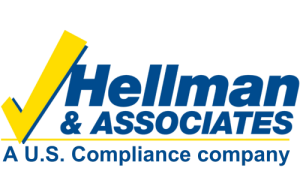OSHA Standard: 1910.1200 Hazard Communication:
The purpose of a Hazard Communication Program is to help employees understand the potential hazards of the chemicals in use at their worksite. This education, required by the Occupational Safety & Health Act, is also called Workers’ Right To Know. Failure to meet all the requirements of the law is OSHA’s most frequently cited violation. One of the reasons for this is many employers, supervisors, and workers think chemicals are just too complex to explain and to understand. As a result, there is a temptation to avoid the subject.
Hazard Communication is very important, however, because it can protect employees from dangers that may be present when chemicals are being used. Two very important keys to a Hazard Communication Program is container labeling and Material Safety Data Sheets (MSDS). These sheets tell you “everything you need to know” about aspecific chemicaEvery employee should be able to answer, and should remember, the following questions:l. If you read the MSDS you will be able to determine:
- The HEALTH HAZARDS associated with any chemical you are using or are exposed to;
- How FLAMMABLE the product is, and at what temperature it may ignite;
- The REACTIVITY of the chemical with water or other agents-will it explode, etc.?
- What PERSONAL PROTECTIVE EQUIPMENT (PPE) is needed to work with the product.
Every employee should be able to answer, and should remember, the following questions:
- Where are the MSDS’s kept for the chemicals I am exposed to?
- What kinds of hazards do I face when I use-or misuse–this chemical?
- Do I understand the emergency procedures to follow in the event of a spill?
- Have I inspected my personal protective equipment to be sure that it will protect me properly when and if I need to use it
Copies of the MSDS’s and the Hazard Communication Program are kept in a binder located (service bay/service managers office). MSDS’s are readily available to all employees during each work shift. If an MSDS is not available, immediately contact your foreman.
Container labels are the first and easiest place to look to see if the material you are using is hazardous. Labels can tell you quickly what you need to do to protect yourself. There are many different types of labels, but the most common type is the manufacturer’s written labels. Written labels state the name of the material, who makes or sells it, and the appropriate physical/health hazard warnings.
In the work place, every container must be labeled, tagged, or marked with the identity of hazardous chemicals contained, and must show hazard warnings appropriate for employee’s protection. The employees in each area should ensure that all secondary containers are labeled with either an extra copy of the original manufacture’s label or with labels that have the identity and the appropriate hazard warning.
